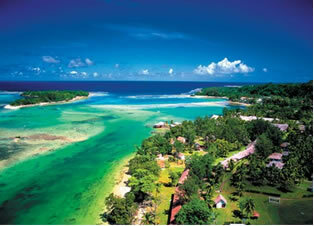Sustainable city it is a concept that provides a series of guidelines to improve the management of an urban area and prepare it for future generations.
To be sustainable, city administration must consider three pillars: environmental responsibility, sustainable economy and cultural vitality.
Sustainable City Objectives
The main objective of the sustainable city is to avoid the depletion of the environment and guarantee its permanence for future generations. Therefore, public policies must always think about the future.
As most of the world's population lives in urban areas, cities have become the epicenter of problems such as pollution and waste of natural resources.
For this reason, it is the urban centers that must reinvent themselves so that the future of the next generations is guaranteed and is better than the world we live in today.
Sustainable City Characteristics
A city to be considered sustainable must:
- Correctly dispose of and reuse solid waste;
- Offer quality water without depleting springs;
- Reuse rainwater;
- Create and use fonts from renewable energy;
- Offer alternative and quality transport for the population;
- Ensure culture and leisure options.
Today, according to researchers, economists and managers, there is no city in the world that is fully sustainable. However, let's look at how cities can make these ideas a reality.
Garbage collection

To end one of the biggest problems in cities, garbage, the best solution is to recycling.
However, for this it is necessary that the population learn to correctly separate waste in places intended for this purpose. This makes it easier to reuse material that is no longer used.
For their part, governments must create laws that encourage selective collection and do away with landfills.
Read too:
- Selective collect
- Sanitary Landfill
Water
A sustainable city makes the most of rainwater and uses it for urban cleaning and industry.
To capture rainwater, buildings can install gutters that make it possible to collect water and establish “green roofs”. These are planned gardens that are cultivated on the roofs of buildings and houses that help to absorb the liquid.
Thus, the green roof is a garden that refreshes the urban area, absorbs polluting gases and also beautifies the environment by making it less hostile.
Read too:
- Waste of water
- Tips to save water
Public transportation
Urban mobility provides for the provision of efficient public transport that is also powered by non-polluting energy.
Likewise, a sustainable city creates means that allow the movement of human-powered vehicles such as bicycles and scooters.
It is up to the citizens to exchange the car for the bicycle and create the carpool system. Likewise, governments need to build bike lanes, raise awareness among drivers about the importance of cyclists, and even replace fossil-fuelled cars with electric ones.
Education and Leisure
A sustainable city values the quality of life of its inhabitants. For this, it is essential that they are educated and that the leisure offer has quality and variety.
Therefore, it is important to increase the city's green area by building parks and squares, promoting cultural incentive policies and valuing local artists.
Examples of Sustainable Cities

According to a study carried out by the Dutch consultancy Arcadis, in 2017, these are the ten cities in the world that most meet the requirements to be considered sustainable cities:
- Zurich, Switzerland
- Singapore
- Stockholm, Sweden
- Vienna, Austria
- London, England
- Frankfurt, Germany
- Seoul, South Korea
- Hamburg, Germany
- Prague, Czech Republic
- Munich, Germany
Sustainable Cities in Brazil
In Brazil, the city of Curitiba, capital of Paraná, is the closest example to the concept of a sustainable city. Curitiba's master plan, which makes it a sustainable city today, began to be applied in 1970.
Focused on transport, waste management and quality of life, the city has transformed its urban design to make it suitable for population growth.
See the list of sustainable cities in Brazil:
- Curitiba/PR
- London/PR
- João Pessoa/PB
- Paragominas/MG
- Santana do Parnaíba/SP
- Extreme/MG
read more:
- Sustainability
- Green Economy
- Sustainable development
- urban geography
- Environmental education



